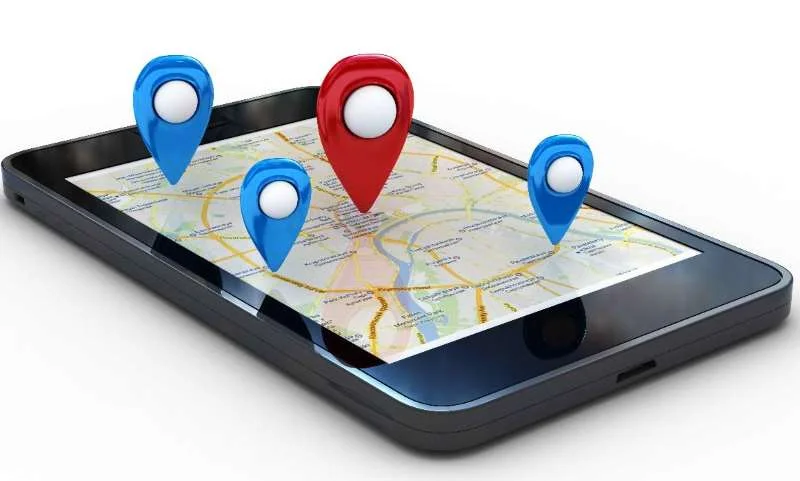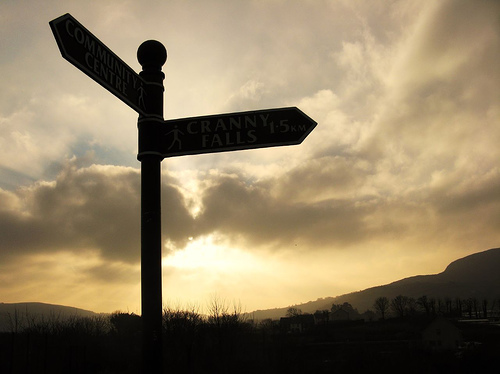All the tech + art news, rounded up for you in one place.
Getting Started on Location-based Social Marketing for your Organization
An Arts Manager's Ultimate Guide To Using Social Media Buttons
5 Ways to Stop Wasting Time and Start Optimizing Your Instagram
Use Sentiment Analytics to Predict Motion Picture Box-Office
The motion picture industry has long searched the magical formula of predicting future box office performances. A glimpse of future box office performances can help a studio save millions in post-production marketing and distribution expenses. The same logic applies to all nonprofit presenting and performing arts organizations - if NPOs can predict their future events’ financial outcomes NPOs can save their precious resources and reallocate them to other uses. Social media may just provide this magical prediction formula.
7 Steps to a Successful Facebook Ad Campaign
Finding new sources of traffic for a website or social media profile can be a challenging task for both novice and experienced web marketers. Facebook Ads are powerful, yet often-overlooked, tools for internet marketing campaigns. Here is a quick overview of Facebook Ads' benefits:
- Increased Exposure: Facebook continues to be the #2 ranked website in the world for web traffic according to Alexa.com. Of the top 5 highest-traffic websites in the world, users spend more time on Facebook than any of the others.
- Increased ROI: Facebook Ads are 25-50% of the cost of running a Google Adwords campaign. A Google Pay-Per-Click campaign can sometimes cost $1 per click. A typical conversion rate (from clicking to taking action) would be 2%. Spending $3,000 for 3,000 clicks therefore, may only result in 60 people taking action (opting in for your email list, purchasing tickets to a show, making a donation, etc). A similar campaign on Facebook Ads would cost around $10 for 1,000 clicks. You can also choose to run a CPM campaign which calculates a cost based on how many 'impressions' you want to make on users. Impressions are geared more for marketers who want to raise awareness about their brand. The Search Engine Journal provides more insight into this topic. Here's a great visual from their article.
Note: Geo= Geographical Segmentation and Keywords= the word or phrase a user types directly into a search engine. Facebook Ads can only target what someone has already indicated they are interested in (theatre, live music, art galleries, etc).
- Targeted Demographics:Facebook Ads provides a precise way to segment your market. From musical interests to relationship status, there are an endless amount of ways to run a market segmentation. Here is a detailed listing of your targeting options.
- Less Competition: Facebook also has an advantage when it comes to your levels of competition. Facebook has an estimated 1/20th of the advertisers that Google has. Here are some other fascinating statistics from the internet marketing blog HubSpot.
If you're considering running a Facebook Ad campaign or are struggling with your current campaign, here are seven steps to help you make the most of your efforts:
1. Run More Than One Ad: As Robert Gore discussed in our latest podcast, it's a great idea to run 5 or more ads for each market segment you choose. Test each ad's performance to see which one has the highest success rate.
2.Choose a Compelling Image: Keep in mind that, unlike Google, the Facebook audience generally isn't logging on to shop for products or services. You must engage a user from the start. This process begins with your headline and image. Here's a great image from an ad run by the Pittsburgh Public Theater. The image conveys high energy and enthusiasm and raises curiosity about the show.
3. Direct Traffic to a Relevant Landing Page: Make sure that the landing page users are directed to after clicking through on your ad is relevant to what was being advertised. Consistency is key. It's up to you to select the most appropriate landing page. It could direct traffic to an outside website or to your Facebook Fan Page. Landing Tabs on your Facebook page can be particularly effective. For more information on creating a Landing Tab, you can refer to Facebook's Help Section or listen to our webinar recording on making the most out of your Facebook page.
4. Optimize Headlines: Marketing Experiments blog author, Hunter Boyle, suggests that the objective of your headline is "not to sell but to connect with your reader." Here's a great article that expands on this principle. One of the best ways to engage your reader is to pose a question in the headline.
5. Consider Your Targets Carefully: In the first tip, we recommended running more than one ad. It's a great idea to test your ads on different market segments too.
6. Make a Compelling Offer: If you are more concerned about click-through rates as opposed to impression levels, then you should consider making a compelling offer in the body of your ad. Just be sure that the landing page follows up on this offer.
7.Track Your Results: Some internet marketing experts, like Ryan Deiss, suggest you should delete any ad with a click-through rate below 2% after a week of running it. This may not apply if you're more concerned with making an impression. Always be mindful of your campaign's goals and re-calibrate your strategy accordingly. Small business expert and author, John Jantsch, suggests using Google Analytics and Google's URL builder tool to monitor the effectiveness of any ads that direct people to a link outside of Facebook.
Update:
For a step-by-step video on making a Facebook Ad, check out our mini-nar: Making Facebook Ads and Diving into Analytics.
One Route, Two Guides -- Part 1: Rebecca Coleman's "Getting Started"
With social media have come social media experts--usually self-taught, who have learned what works because they have done it themselves. As more organizations turn to these explorers to lead the way, it seems natural that the pathfinders would begin to document what they have learned to enable information dispersal.
Rebecca Coleman, a successful theater publicist in Canada, has released a social media instructional that she conceived for "artists or arts organizations that see the value in participating in social media, but are unsure about how to begin." "Getting Started with Social Networking for Artists and Arts Organizations: A Guide to Creating a Marketing Plan Using Social Media," is one part marketing basics, one part "what's what" encyclopedia of the tools available, with a dash of strategizing tools in a "get you thinking" worksheet series. Turning a self-described "hobby" of theater promotion into a full-time job led to Coleman's slow "foray into Social media. I think that’s the way to go. I started by joining Facebook, then about a year later I started blogging as a guest on someone else’s blog. After nearly a year of that, I started my own blog, and began Twittering. I took all of that experience and put it into my book. It’s like a shortcut. " Her e-book, which she is marketing almost exclusively online, is a great tool for beginners. For those who find the prospect of figuring social media out daunting (let's face it, many of us have spent a good bit of time in conferences, webinars, reading blogs and just getting hands-on experience in order to get comfortable with navigating the social media waters, and it can be exhausting), this e-book does a great job of putting it all in one place. Coleman obviously writes from experience, focusing on what she thinks is important based on her own adventures. But, for those of us who don't consider ourselves novices, it is more likely to be a reference than something providing new insights and information.
The strengths of Coleman's book are her meticulous detail (though this may also be overwhelming to a social media novice) and her integration of true marketing components. She reviews fundamentals of marketing and explains how Web 2.0 can enhance the marketing experience. Her own experience, moving into social media after already having a strong and successful offline presence, may not reflect that of her readers, who may be struggling arts organizations hoping that by integrating social media into their marketing plans they will turn their frustrations around. I think that this is where the marketing emphasis may assist companies that might otherwise spin their wheels into the ground.
"(Social media) requires time to create and maintain, which can be a huge challenge for many underfunded, understaffed arts organizations. But this is where having a plan can really help." This belief manifests as the most interactive, arts-geared component in the guide: a series of worksheets at the end of the e-book that take the reader and prospective social media user through a process of reflection and planning.
Coleman is passionate about what she has created, and though the arts are her forte, this guide is certainly one that would be useful for non-artistic small and financially-strapped businesses. I couldn't resist picking Coleman's brain to see what she felt successful use of social media is, at the end of the day. Her guide is a great start, but what would she consider being the best result?
Coleman: For me, successful social media is: engaging your audience or potential audience, one-to-one being able to solve problems for your audience/potential audience creating an online community that is supportive and passionate about the same things you are and, yes, selling tickets! For example, if you are having a slow night, reservations are low, send out a Tweet or a message to your Facebook fan group saying that the first 20 people that show up at the door and say a secret password get in for half-price. Sure, you’re selling tickets at a discount, but at least you are getting people in through the door. And word of mouth is always your best form of marketing!
By having it in electronic form, she ensures that any updates can be made to keep the guide current and relevant for its readers. But because she is marketing it almost exclusively online, she must rely on a lot of real-world word-of-mouth to get the truly "untechnological" to take note. Because Coleman is the first to admit that real-world relationships and online relationships reflect and enhance one another, I suspect that people who find her e-book online will have heard about it from her obviously supportive offline network.
A final thought from Coleman: I think a lot of people find it very challenging to make the shift from the old ways to new media. I often see people trying to graft old media ideas onto new media. You can’t just send a press release to a blogger. I mean, you can, but the press release will carry a lot more weight if the blogger knows that you have been reading their blog, and are familiar with them. Social media is about personal relationships. In the past, I think we maybe have hidden a bit behind “the business model.” . . .Our audiences want to see the face behind the company. That’s what’s interesting and compelling—the people who are pouring their passion into these art projects. In my experience, passion is attractive, and will get people in through the door.











